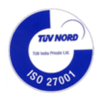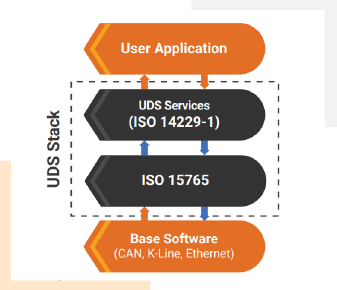Android Automotive Development Services
Build Futuristic Automotive Cockpits Using Google’s Exclusive Car Android OS





The number of car manufacturers incorporating Android Auto connectivity in their vehicles and head units have been increasing steadily. Wireless projection of mobile data on the infotainment display was the most recent feature offered by Android Auto, and users are loving it!
Meanwhile, Google introduced Android Automotive, a revolutionary Android operating system crafted specifically for automotive applications.
Since the introduction of the platform, Embitel has partnered with global automotive OEMs for Android Automotive development – for cutting-edge infotainment systems and complete e-cockpit solutions. We have also successfully delivered a number of customized automotive HMI designs using widget-based HMI principles.
What are the Benefits of Android Automotive?
Unlike Android Auto, Android Automotive is a car operating system. The Android Automotive OS enables vehicle users to access Google Assistant, apps from Google Play, Google Maps, etc. directly from the infotainment screen, without connecting a mobile phone to the head unit.
For automotive engineers, Android Automotive is an ideal development platform offering features such as virtualization, AVB support, car services, custom audio settings, various power modes, and more!
The customized experience offered by the platform is unparalleled. Hence, automakers developing their flagship products today are increasingly relying on Android Automotive Operating System (AAOS) to power their futuristic IVI systems, digital cockpits and aftermarket product solutions.
Our Android Automotive Development Services
Our multifaceted team of industry veterans and innovative thinkers is the force behind the continued success of our Android Automotive development projects.
Our Android Automotive services can be classified into the following categories:
Porting Existing Platform to Android Automotive
We support customers in core platform migration to Android Automotive.Software Testing
Multi-level testing of system software is performed by our automotive testing teams to ensure that all requirements are met.Android Automotive App Development
Leverage our experience in crafting intuitive automotive applications that redefine the user’s in-vehicle experience.FOTA Update
Regular security and functional updates can be effortlessly implemented through our proprietary FOTA update platform.Boot Time Optimisation
We help in optimising Android Automotive system boot time at multiple stages, so that you achieve lightning-fast booting!Proof of Concept Development
Prior to POC development, we perform diligent assessment of Android Automotive feasibility, BOM cost optimization possibilities and customization requirements. Software and peripheral components we use for the POC can be easily reused during the actual project implementation. This helps you save 10-15% on overall implementation cost.Full-stack Design and Development
Our automotive champions collaborate with you for the design of platform architecture and complete development from bootloader to HMI layer. We specialise in crafting process- and operator-centric UI/UX design, localization features/multilingual support, etc. We also have extensive experience in developing multi-modal HMI with touch, gesture, steering wheel and voice control.
Hardware Design & Development
We undertake hardware design and development projects for applications powered by Android Automotive.
ISO 26262 Compliance
Our automotive functional safety practice is adorned with experienced safety managers and engineers who focus on delivering ISO 26262 compliant digital instrument clusters for our customers.Support and Maintenance
We assist in platform migration to the latest version of Android Automotive, followed by long-term performance monitoring, regular version upgrades, bug fixes, etc. to ensure an up-to-date platform.AAOS 7 to AAOS 14
Team Expertise
30%
Cost Reduction
50%
Reduced Time to Market
Core Competencies
- Android Automotive Software/Hardware
- Multi-display HMI/UI
- Automotive OTA Update
- Automotive Test Automation
- Digital Instrument Cluster
- Android Automotive Apps
- Hypervisor Architecture
- Android Automotive Infotainment
- Rear-seat Infotainment
- Android Automotive e-Cockpit
Our Android Automotive Success Stories

ANDROID AUTOMOTIVE BASED IVI SYSTEM DEVELOPMENT FOR ELECTRIC SUVS
Our customer, a US-based EV manufacturer, planned to develop a futuristic IVI system for their electric SUV project. The infotainment system runs on Android Automotive OS, based on Android 9.
Embitel Solution:We designed and developed the software for the IVI system, with features such as navigation engine, Bluetooth connectivity, HVAC, driver and passenger seat temperature control, media player, phone connectivity, customized home screen, CAN stack integration, OTA update, etc.
Embitel Impact:The customer was able to incorporate a cutting-edge IVI system in their flagship automotive project. The project execution strategy we followed accelerated the progress of development and testing activities. This reduced the time to market significantly.

Integration of UDS and CAN stacks on Android Automotive OS
Our customer was working on after-sales maintenance and repair of their transportation devices running on Android Automotive OS 8.1. They desired to integrate vehicle diagnostics functionality in their products.
Embitel Solution:Our ready-to-deploy UDS and CAN software stacks were the perfect solution for them. Our engineers adopted these stacks for an Android environment, understood the customer’s code base and integrated it with their existing software. We also performed system testing to validate all functionalities.
Embitel Impact:Our UDS and CAN stacks equipped the customer’s platform with various features related to off-board fault diagnostics and ECU communication. They can now implement various other functionalities over that, to enhance their diagnostic capabilities.
Why Choose Embitel?
Our focus on quality assurance and rigorous testing mechanisms ensures superior quality of deliverables.
We provide support for end-to-end Android Automotive development and implementation of turnkey automotive projects.
Our focus on quality assurance and rigorous testing mechanisms ensures superior quality of deliverables.
We provide support for end-to-end Android Automotive development and implementation of turnkey automotive projects.
Android Automotive Development – Related Videos
Knowledge bytes
- What is the difference between Android Auto and Android Automotive?
Android Automotive, a custom version of Android, is a standalone car operating system that is embedded in the vehicle’s head unit. Android Automotive is deeply connected with many of the vehicle’s in-built electronics such as HVAC.
On the other hand, Android Auto is an app that resides on the vehicle infotainment system and the driver’s smartphone. It enables Android phones to connect to the IVI system over USB connection or via Bluetooth.
Our blog on Android Automotive versus Android Auto provides more details on the difference between the two.
- What OS do cars use?
The most popular operating systems for vehicle infotainment applications are Android, Linux and Windows.
Android, Linux and QNX operating systems are perfect for developing high-end display units and GPS systems with navigation features.
- What are Android Automotive apps?
- Media apps that play music, radio or audiobooks
- Messaging apps that display notifications, messages and enables users to reply using their voice
- Navigation apps that help users to find locations and provide directions so that they can reach there easily
- Video apps that enables users to enjoy videos while the car is parked


